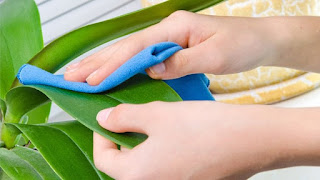17 Baking Soda Uses in the Garden | Baking Soda for Plants
Do you know you can use baking soda for plants? Here are 17 hacks on how to use baking soda in the garden that you will find useful.
Baking soda is used in cooking, in cosmetics and for the maintenance of the house. But its role does not end there: Baking soda for plants can be used.
100% ecological, baking soda can be used at any time of the year, in every corner of the garden. It is biodegradable and nontoxic. It can be a slight replacement for the pesticides, fertilizers and other chemicals you use in your garden.
Baking Soda Uses in the Garden
1. Houseplant Cleaner
It is important to regularly clean the foliage of your houseplants to remove dust and grease, to promote photosynthesis. For this, our recommendation for you is to carefully move a soft, lint-free cloth moistened with the solution of water and sodium bicarbonate (a pinch of baking soda in one liter of water) on the surface of leaves (top and bottom).
2. Clean Garden Furniture
Add 1/2 cup baking soda and 1 tablespoon dishwashing liquid in a gallon of warm water. Take a sponge and clean the garden furniture with it and then rinse it with clear water.
3. Give Plants a Boost
Mix together 1 teaspoon baking soda, 1/2 teaspoon clear ammonia and 1 teaspoon Epsom salt in a gallon of water. Mix well and give each plant about a quart of the solution. This solution will work as a fertilizer, the plants that are looking dull, and growing slowly will perk up, rejuvenate their growth and become lush green.
4. Keep the Smell of Compost away
To keep the smell from compost pile under control, use a small amount of baking soda to eliminate odor. This helps prevent acidity build up.
5. Clean Bird Bath and Pots
To clean your bird bath and pots, sprinkle baking soda on it and clean with damp cloth or scrubber. After cleaning, rinse thoroughly and allow them to dry out completely.
6. Get Rid of Slugs
Want to get rid of slugs? Simply sprinkle baking soda on them.
7. Encourage Plants to Bloom
Dissolve 1 tablespoon of baking soda into 2 quarts of water and use this to water your flowering plants to encourage blooming.
8. Sweeter Tomatoes
Sprinkle a small amount of baking soda around the base of your tomato plants. The baking soda will be absorbed into the soil and lowers the acidity level of tomatoes, thus gives you sweeter than tart flavor.
9. Acidic Soil
If you have acidic soil, sprinkle a small amount of baking soda on it (application rate varies according to the pH level). When digging, mix it and water and retest your soil after a few days. Do this on the small area first. You will be impressed by the results: Fewer weeds, more flowers, and high-yield garden.
10. Kill Cabbage Worms
Mix equals part of flour and baking soda and dust that on infected plants. The worms that inflicting your brassicas will ingest the baking powder mixture while eating the leaves and die soon.
11. Test Soil pH
Take some soil on a dish and make it muddier. Sprinkle a small amount of baking soda onto the soil. If the combination bubbles, your soil is acidic.
12. Use it as a Pesticide
Use baking soda to effectively reduce infestations of many insects such as aphids, scales, and the spider mites. It may not kill them all but have a repellent action and halt their progress.
Mix 1 teaspoon of baking soda and 1/3 cup of olive or mustard oil. Measure out 2 teaspoons of this mix and add it to 1 cup of water. Mix it well together and spray it on the infected plants.
13. Prevent Mildew and Other Fungal Diseases
Spraying baking soda on the leaves makes the surface become less acidic and limits the ability of fungal spores to grow. To prepare this, mix 1 teaspoon baking soda and a few drops of liquid soap in 1 liter of water and spray the solution on the infected plants.
This preventive and curative treatment is effective in the vegetable garden, on the fruit trees, rose bushes, vines and climbers and flowers.
14. Weed Killer
To fight effectively against the weeds that invade walkways, edges and garden beds in an ecological and economical way, baking soda is best. It has the enormous advantage of being completely biodegradable and nontoxic. So you can sprinkle it on the tufts of weeds. It will burn the foliage and weeds will fade and disappear in a few days. It can also be used to prevent the weeds, it will slow down the arrival and growth of them. It can also be used in the crevices of pathways to kill the weeds.
15. Clean the Walkways
Rinse the surface with sodium bicarbonate water (30 g or 2 tablespoons per liter of warm water). If necessary, add baking powder and scrub with a brush or use a broom with stiff bristle.
Beware not to spill the solution on the lawn and flower beds: An excessive concentration of bicarbonate and hot water can “burn” the plants.
16. For Cut Flowers
To keep your cut flowers fresh for a long time put a teaspoon of baking soda in the vase.
17. Clean dirty hands
Got dirty hands after gardening? Simply rub baking soda on wet hands and rinse them with water.
Precautions when using baking soda in the garden
Avoid as much as possible to spray directly on the flower stalks and flower buds.
When trying any home mix, you should always test it out on a small portion.
Also, follow the right dosages because the too strong combination can burn the leaves of the plants.






No comments:
Post a Comment